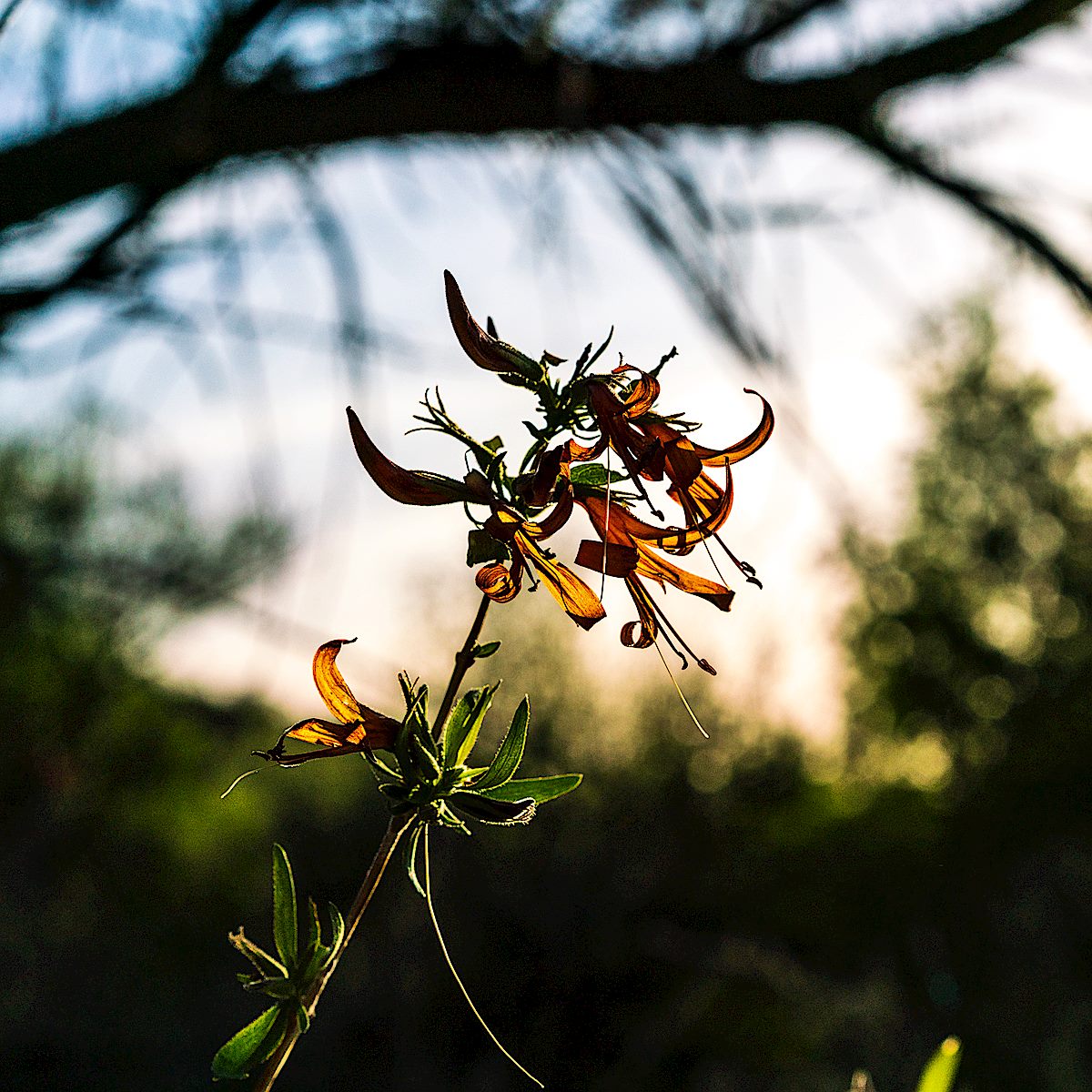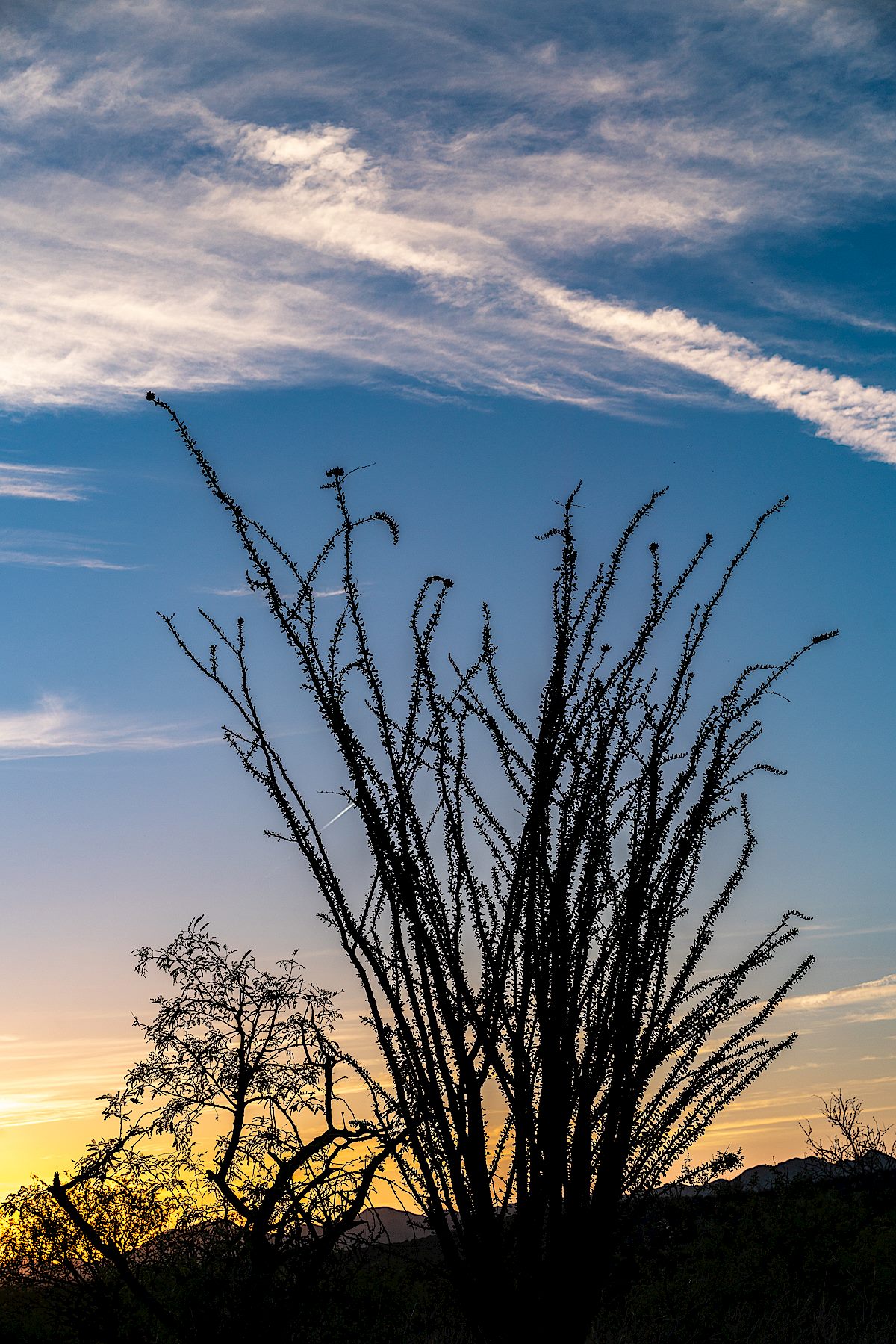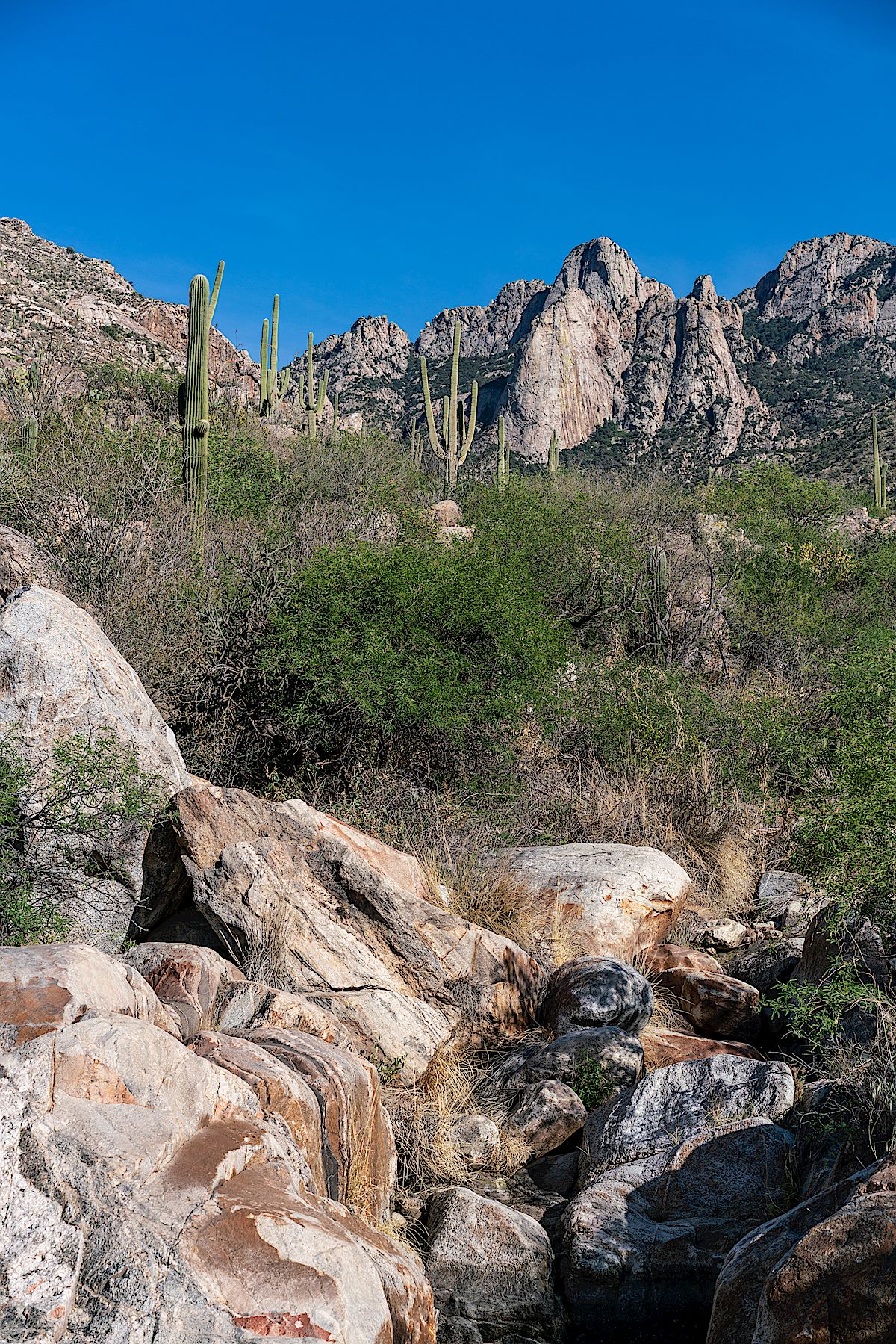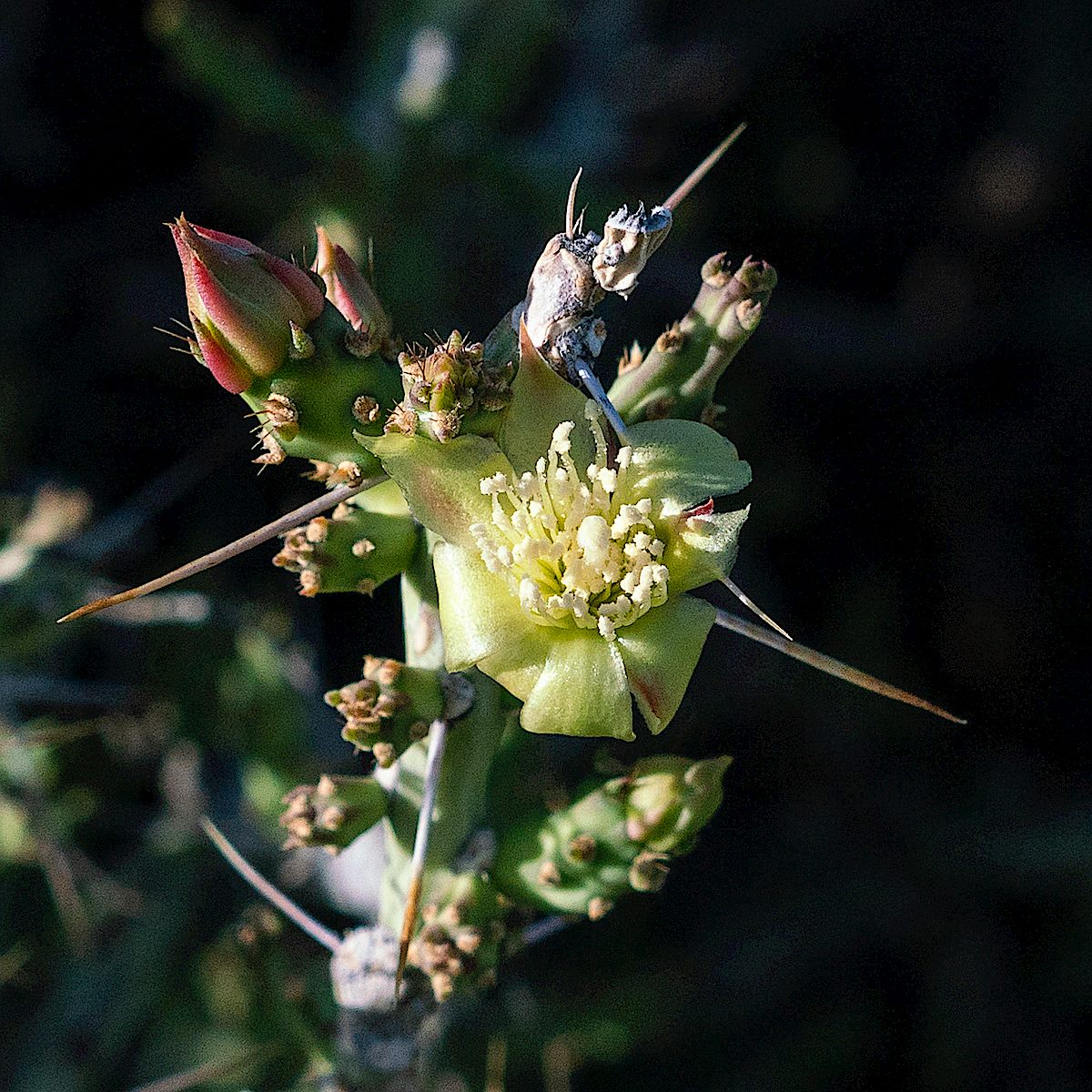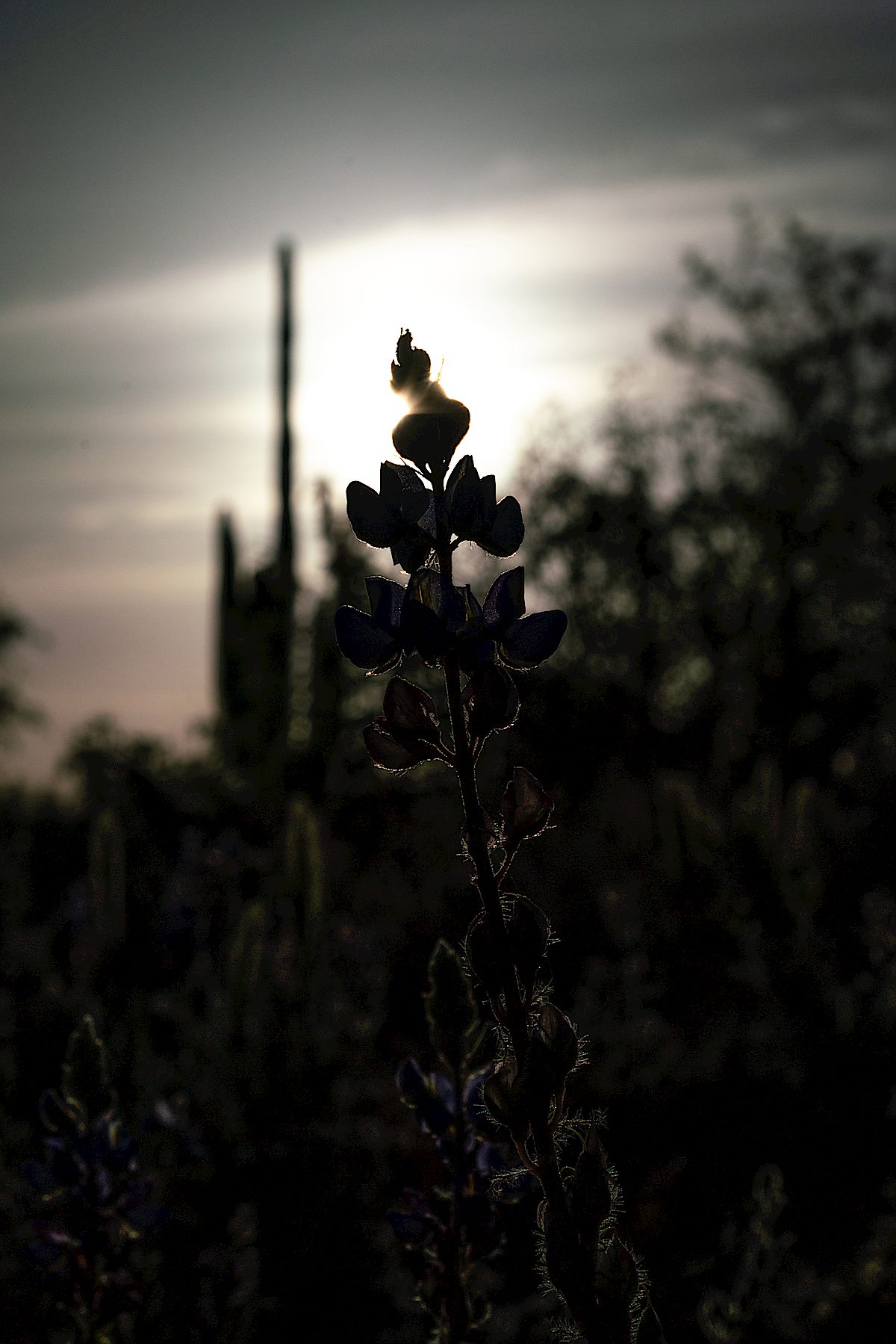Wandering in the Lower Sutherland Trail area from the South Golder Ranch Parking Area…
sunset
Fenced Corridor, Rosewood Point, Campbell Trailhead – 12/22/2018
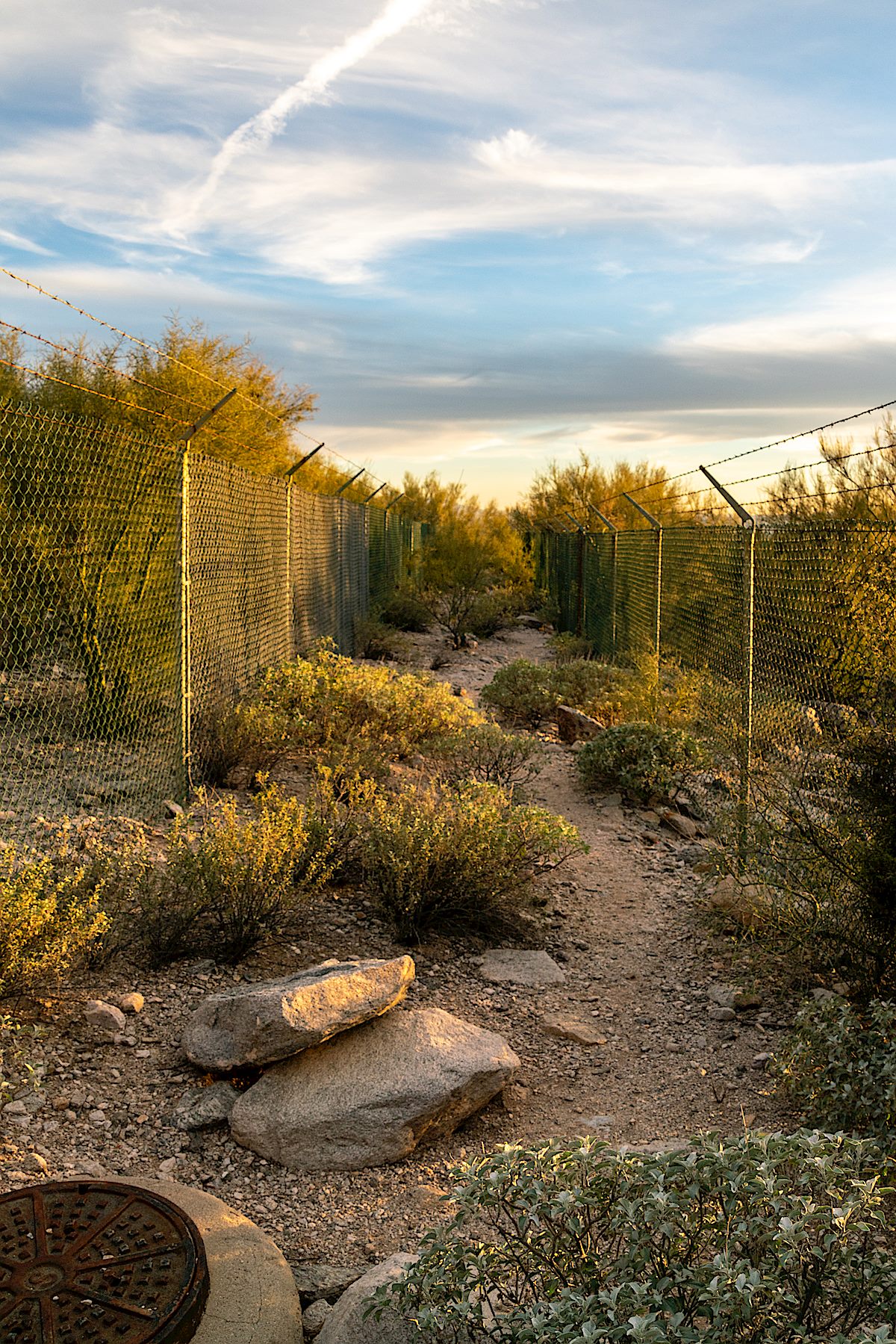
Hiking north from the Campbell Trailhead is an interesting experience – for much of its length the tight corridor to the Pusch Ridge Wilderness is bounded by chain linked fence topped with barbed wire – today it reminds me of a passage from Paul R. Krausman’s And Then There Were None – The Demise of Desert Bighorn Sheep in the Pusch Ridge Wilderness, p. 103:
it was apparent that the growing human population of Tucson and surrounding towns had developed right up to the borders of protected areas, essentially creating an anthropogenic fence around the population of bighorn sheep that prevented them from moving to other mountain ranges that they historically occupied in the Tucson Basin, including the Silver Bell, Tucson, Rincon, and Santa Rita Mountains, which may have provided habitat for a metapopulation of bighorn sheep. This anthropogenic fence clearly added to the genetic isolation of the herd.
I don’t believe there is any intended double meaning in Krausman’s passage – but, in-between the tall chain link, it seems to beg for a re-imagining into the text of a future – strangely similar – volume on a different species:
it was apparent that the growing human population of Tucson and surrounding towns had developed right up to the borders of protected areas, essentially creating an anthropogenic fence that prevented them from moving thru the mountain ranges that they had historically used in the Tucson Basin, including the Silver Bell, Tucson, Rincon, and Santa Rita Mountains, which may have provided critical habitat for escape from their increasingly crowded technologically-dominated urban environment. This anthropogenic fence clearly added to the isolation of the human population from the natural world now so critical to their survival.
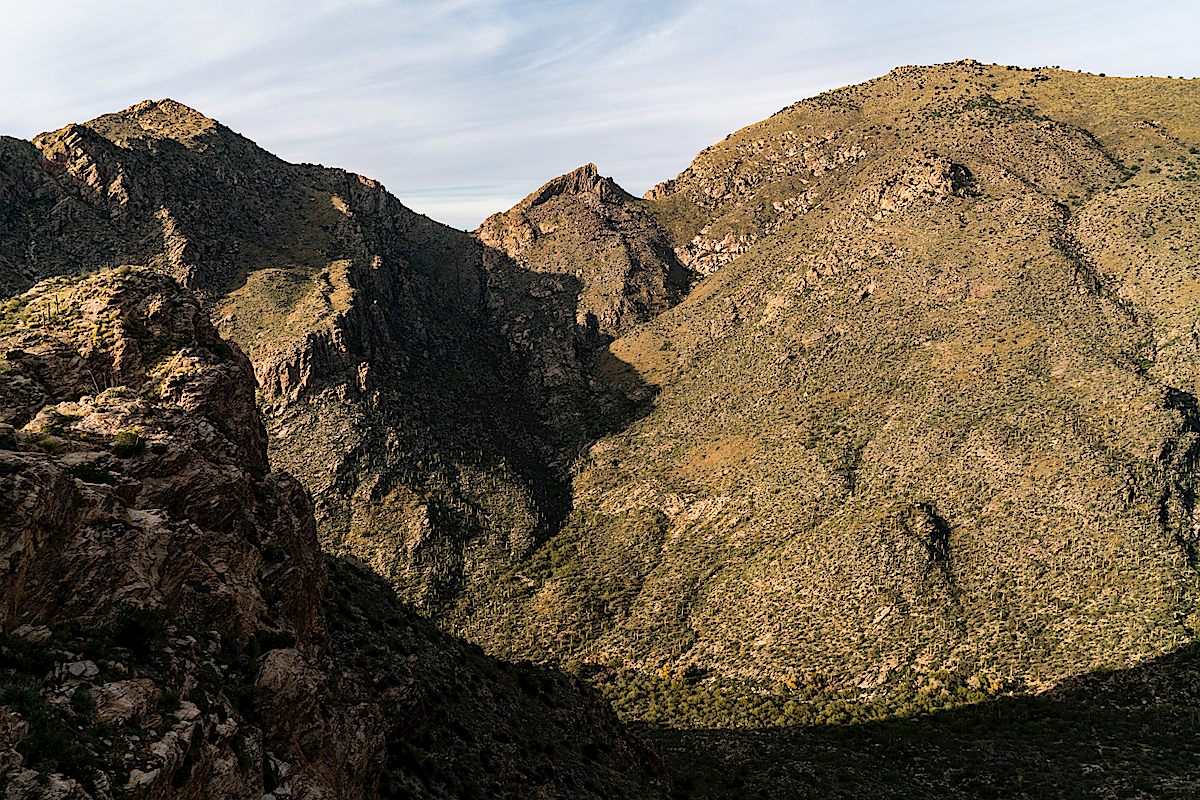
With an official trailhead you might expect an official trail at the end of the access corridor, but there isn’t one – and with the overlapping concerns of the Pusch Ridge Wilderness and Bighorn Management Area I don’t think there ever will be. Without an official trail entrance into the wilderness is closed at this location from January 1 to April 30 – but the rest of the year you can explore the wilderness – perhaps finding the rough, informal, steep, sometimes obscure and hard to find route that winds its way towards Rosewood Point and up towards more distant destinations.
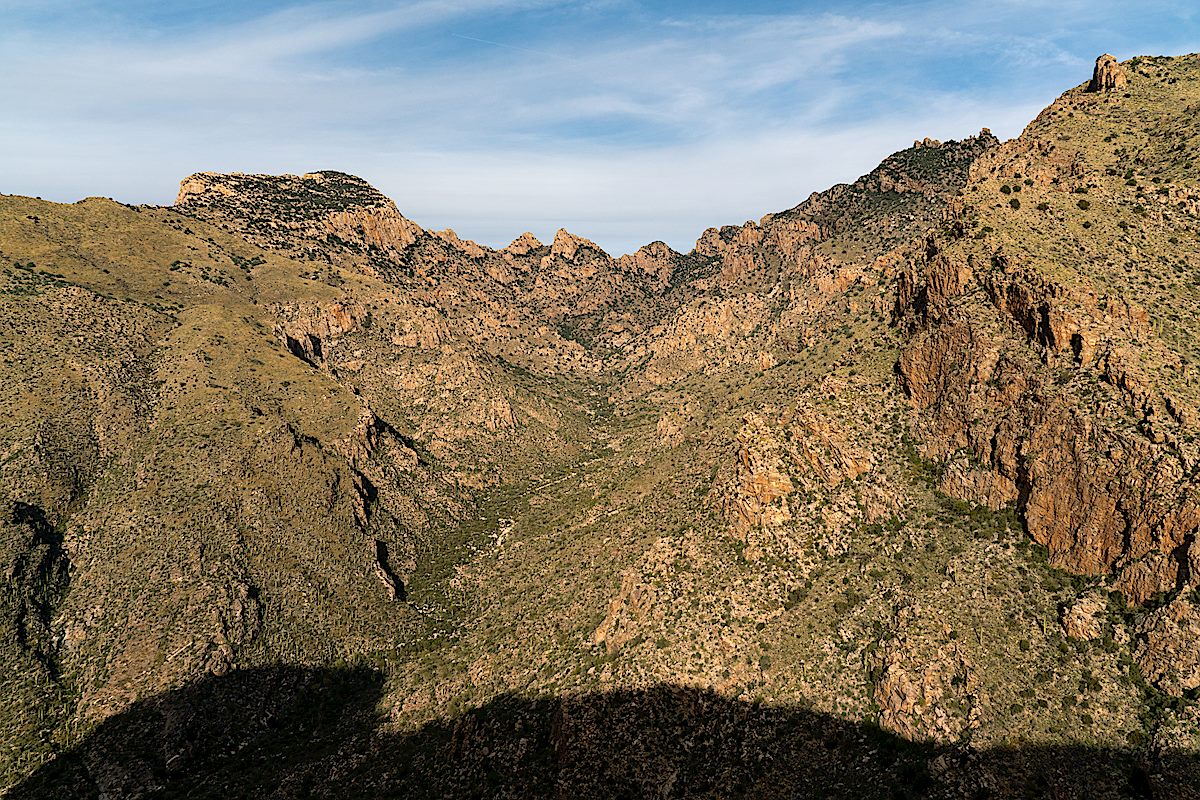
Rosewood Point is on the east side of Pima Canyon with views down into the canyon and across to the well known destinations on Pusch Ridge: Pusch Peak, The Cleaver, Bighorn Mountain and Table Mountain – and Rosewood Point is high enough that, like all good destinations in this area of the mountain, there is a thriving population of Shin Daggers to …enjoy… A minor, but worthy, destination.
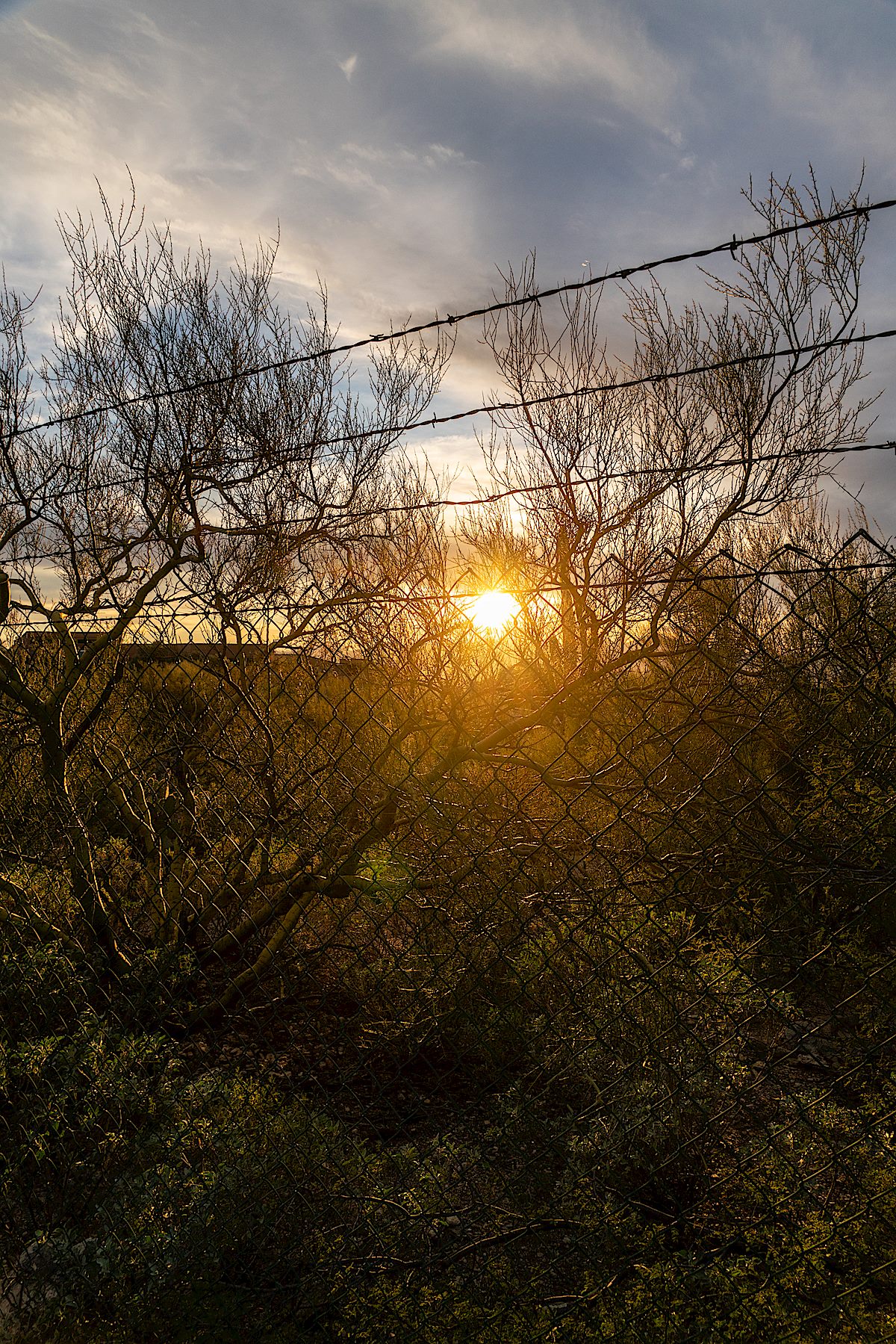
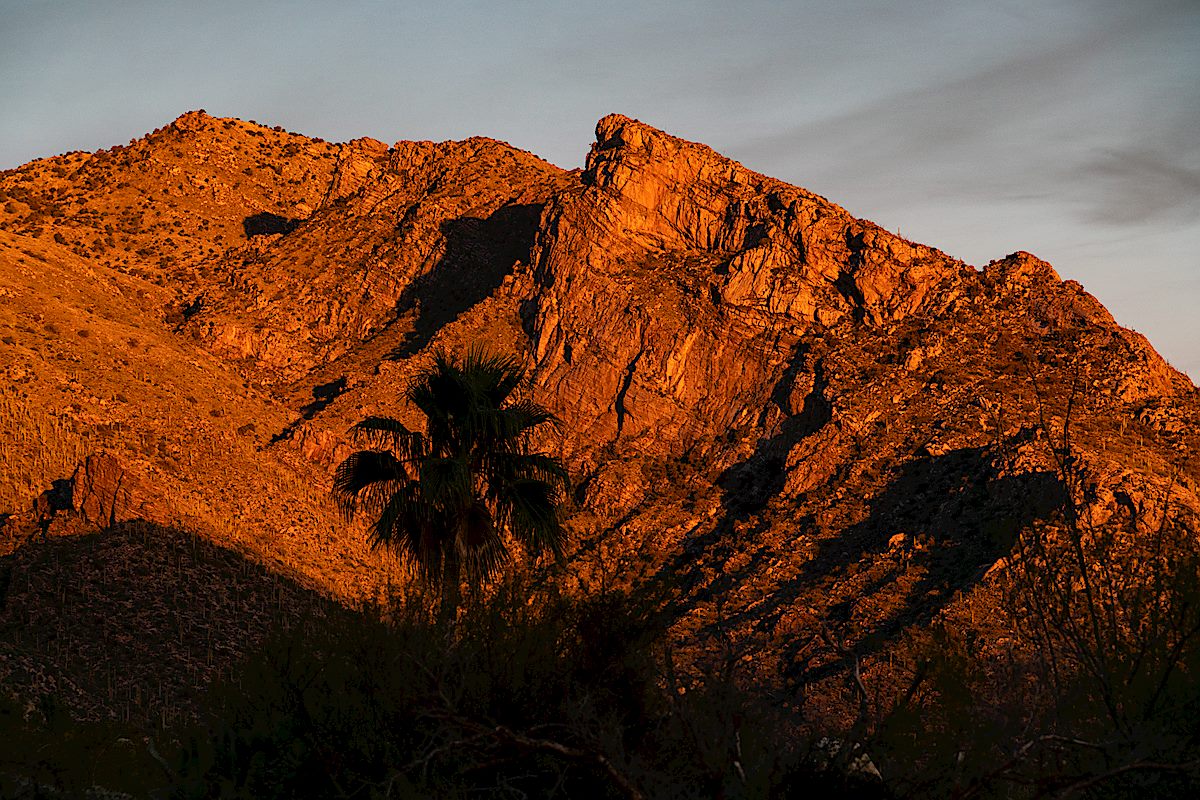
From Oro Valley – 1/6/2019
Pictures from Oro Valley – from Oracle Road near First Ave, the Oro Valley Public Library and Naranja Park – I would rather be hiking in the mountains than shooting from town, but different days present different opportunities and Oro Valley has some amazing views of the Santa Catalina Mountains!
Cottonwood Tank, Touching Catchment Canyon – 12/30/2018
A 2017 post shows Cotton Wood Tank sadly covered in graffiti (picture below) – thankfully between then and now the graffiti has been painted over (picture above). I was slightly surprised, since this hasn’t felt like a very wet year, to see that the tank is to-the-rim full at the moment, even higher than last year.
Our destination for the day was the bottom of Catchment Canyon – I thought we would have time to explore up canyon but it took longer than I guessed to reach the canyon so we touched the bottom, took some pictures and, with the Bighorn Sheep Management Area closing in two days, said goodbye-until-next-year…
